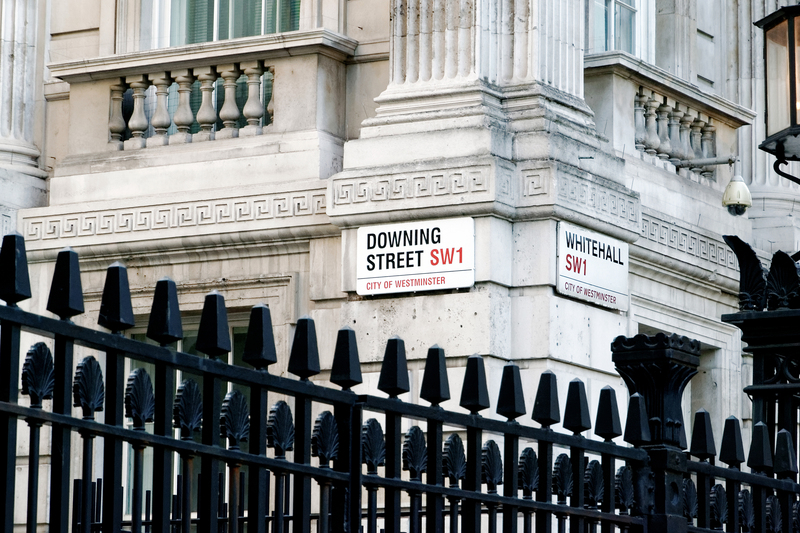How to Sort and Secure Your Items When Preparing for Moving Day
Moving to a new home or office is an exciting new chapter, but the process can be daunting if you don't prepare properly. One of the most crucial steps to ensure a smooth move is sorting and securing your items before moving day. Whether you're relocating across town or to another state, having an effective plan for organizing, packing, and safeguarding your belongings makes all the difference. This comprehensive guide offers expert insights, actionable checklists, and key tips on how to sort and secure your items for moving day.

Why Proper Sorting and Securing Items Before Moving Is Essential
Failing to sort and secure your items before the big day can lead to chaos, frustration, and unexpected costs. Imagine arriving at your new place only to realize that precious heirlooms were damaged, or you've paid to transport items you no longer need. Taking the time to organize and protect your belongings ahead of time ensures:
- Less stress during packing, transportation, and unpacking
- Reduced risk of items breaking or going missing
- Lower moving costs due to less unnecessary stuff
- An easier time unpacking and settling into your new home
- Peace of mind knowing your valuables are secure
Step-by-Step: Sorting and Securing Items When Planning a Move
To help you transition smoothly, follow these comprehensive steps to sort and secure your possessions efficiently:
1. Start with a Plan: Inventory and Timeline
- Inventory your belongings: List everything you own, especially high-value or fragile items. Use a notebook, spreadsheet, or moving app.
- Set a moving timeline: Begin sorting at least 4-6 weeks before your move. Allocate specific dates for each task.
- Assign priorities: Identify items you'll need right up until moving day versus those that can be packed early.
Creating a plan helps you remain organized and prevents last-minute panic. Download an inventory template, or consider using apps to keep track of your possessions and moving tasks.
2. Sort by Category and Room
Sorting your items methodically makes packing and unpacking much easier. Use the following system:
- Room-by-room: Tackle one room at a time to avoid feeling overwhelmed.
- Category approach: Group similar items together--such as kitchenware, clothing, electronics, or books--so you can pack them efficiently.
- Use sorting labels: Mark items for keeping, donating, selling, recycling, or discarding.
Pro Tip: Sorting your items by necessity helps you prioritize what goes first. For instance, out-of-season clothes and seldom-used gadgets can be packed early, while daily essentials are packed last.
3. Declutter: Purge Before You Pack
Moving provides the perfect opportunity to purge unwanted possessions and lighten your load. Here's how:
- Set criteria for what to keep: If you haven't used it in a year--or it doesn't fit your new space--let it go.
- Organize a garage sale: Sell furniture, electronics, and clothes you no longer need. This can help offset moving costs.
- Donate usable items: Contact local charities or shelters to donate gently used possessions.
- Responsibly dispose of waste: Recycle, e-waste, and hazardous materials according to your city's regulations.
This decluttering step not only cuts moving costs but ensures you start fresh in your new location. Remember, the less you take, the simpler your move will be!
4. Gather the Right Packing Supplies
High-quality packing materials are crucial for securing your items. You will need:
- Sturdy boxes (various sizes)
- Bubble wrap and packing paper
- Heavy-duty tape
- Stretch wrap for furniture
- Furniture pads and blankets
- Marker pens and labels
- Seal-able plastic bags for small items
Invest in new boxes for fragile or valuable belongings, as used boxes might not provide enough protection. Clearly label each box on all sides with its contents, destination room, and handling instructions.
5. Secure Fragile Items with Extra Care
Properly securing breakables is a top concern for any move. Here are some best practices:
- Wrap individual items: Use bubble wrap, foam sleeves, or packing paper for each fragile object.
- Use padded boxes: For glassware, china, and electronics, use double-walled boxes or specialized dish packs.
- Fill empty spaces: Place packing peanuts, crumpled paper, or towels in gaps to prevent shifting during transit.
- Mark as fragile: Clearly mark boxes containing breakable items and note which side should face up.
If possible, move irreplaceable valuables personally, instead of putting them on a moving truck.
6. Disassemble and Protect Furniture
- Take furniture apart when possible: Remove legs, shelves, or other detachable parts for safer and easier transport.
- Use protective materials: Wrap frames in furniture pads, blankets, or bubble wrap to guard against scratches and dents.
- Bag small hardware: Place screws, bolts, and other small pieces in labeled, sealable bags, and tape them to the corresponding furniture piece.
Take photos before disassembling any complicated pieces to simplify reassembly in your new home.
7. Organize Documents and Personal Papers
Your legal documents, IDs, medical records, and personal paperwork should be kept in a secure file box that you transport yourself. Don't forget:
- Birth certificates, passports, and ID cards
- Bank and financial documents
- Insurance policies
- Home or rental contracts
Keep digital backups in an encrypted cloud storage or USB drive for extra security.
8. Use an Item Tracking System
- Label each box: With color-coded stickers by room, and a brief description of contents.
- Create a master inventory list: Assign each box a number and record it on a spreadsheet or moving app.
- Take photos: Especially for valuable or delicate items, to document their condition.
With a proper tracking system, you reduce the chances of accidentally losing anything and make unpacking a breeze.
Additional Tips for Packing and Securing Items Before a Move
Don't Overpack Boxes
- Heavy items should go in small boxes to prevent them from breaking and to avoid injury.
- Lighter items like linens and pillows should fill larger boxes.
Use Clothes and Linens for Padding
- Wrap breakable items with T-shirts, towels, or pillows to save space and maximize protection.
Secure Appliances Properly
- Empty, defrost, and dry refrigerators and freezers at least 24 hours before moving.
- Wrap cords and secure doors to prevent movement and damage.
Seal and Stack Boxes the Right Way
- Seal all boxes: Tape seams thoroughly along both the top and bottom for security.
- Stack heavier boxes on the bottom: To prevent crushing lighter boxes.
Protect Your Valuables
- Keep cash, jewelry, family heirlooms, and important documents with you at all times.
- If hiring movers, take out additional insurance if needed for high-value items.
Dispose of Hazardous Materials Properly
- Paints, cleaning supplies, and flammable items often cannot be moved by professionals. Check regulations and dispose of them responsibly.

Frequently Asked Questions About How to Sort and Secure Items for Moving Day
How far in advance should I start sorting and packing before a move?
For most moves, begin the sorting process at least a month in advance. Start with less-used items, garage, and storage spaces, and gradually work your way to daily essentials as moving day approaches.
What is the best way to label moving boxes?
Use large, legible labels on multiple sides of each box. Consider color identification for each room. Detailed descriptions help you (and movers) know exactly how to handle and where to place each box.
How do I keep track of everything during a big move?
Create an inventory or tracking spreadsheet with corresponding box numbers and brief content lists. Some moving and inventory apps allow for photo documentation and digital checklists for added peace of mind.
What should I never pack on a moving truck?
Personal luggage and essentials (clothes, toiletries, medications), sensitive documents, jewelry, cash, and irreplaceable family heirlooms should always stay with you during the move.
Should I hire professionals to help move fragile and valuable items?
If you own delicate items like art, antiques, or electronics, consider professional movers who specialize in packing and transporting such goods. They have experience and insurance to cover any mishaps.
Conclusion: Make Your Next Move Safe and Stress-Free
Relocating doesn't have to be a source of stress and chaos. By following these step-by-step strategies on how to sort and secure your items when preparing for moving day, you set yourself up for success. Remember to plan early, declutter ruthlessly, use proper packing materials, and keep an accurate inventory. Not only does this make moving day easier and more efficient, but it also ensures your treasured possessions arrive safely at their new home.
For more tips on moving, packing checklists, and smart home organization solutions, explore our additional resources or contact professional moving services for expert help. Wishing you a seamless and secure moving experience!



